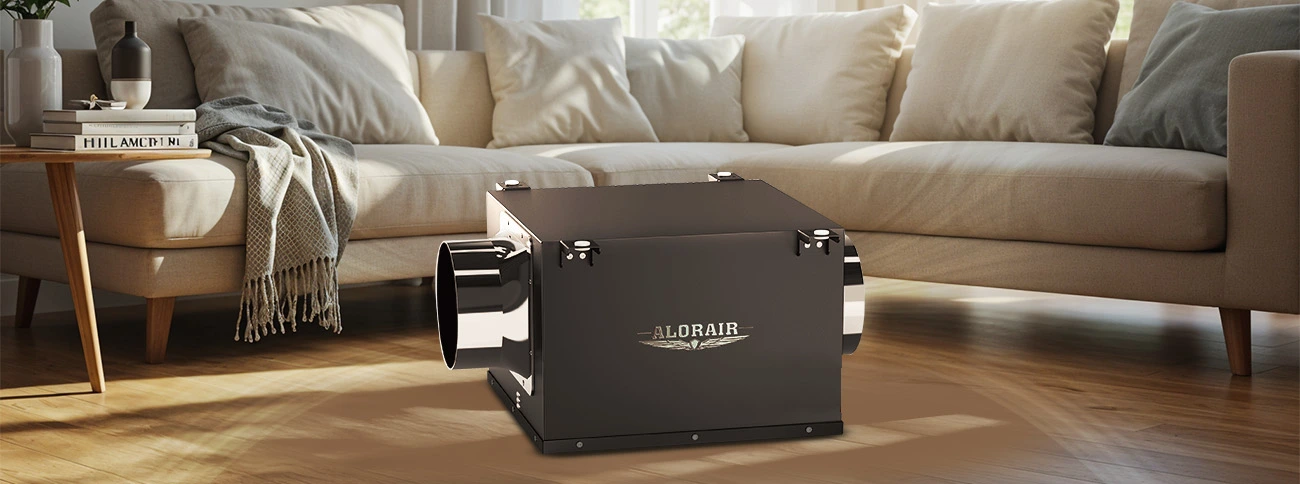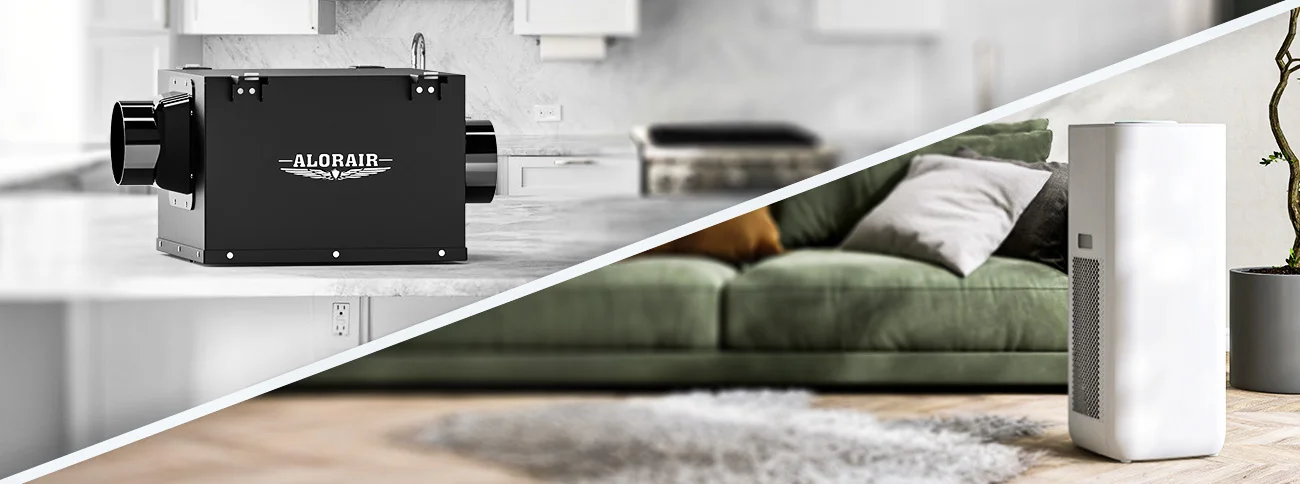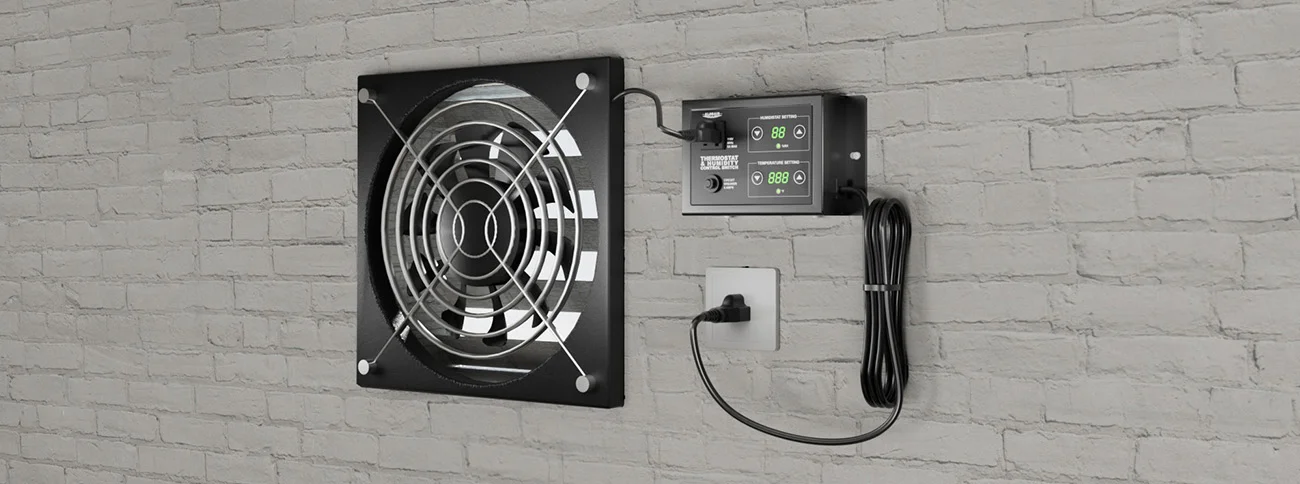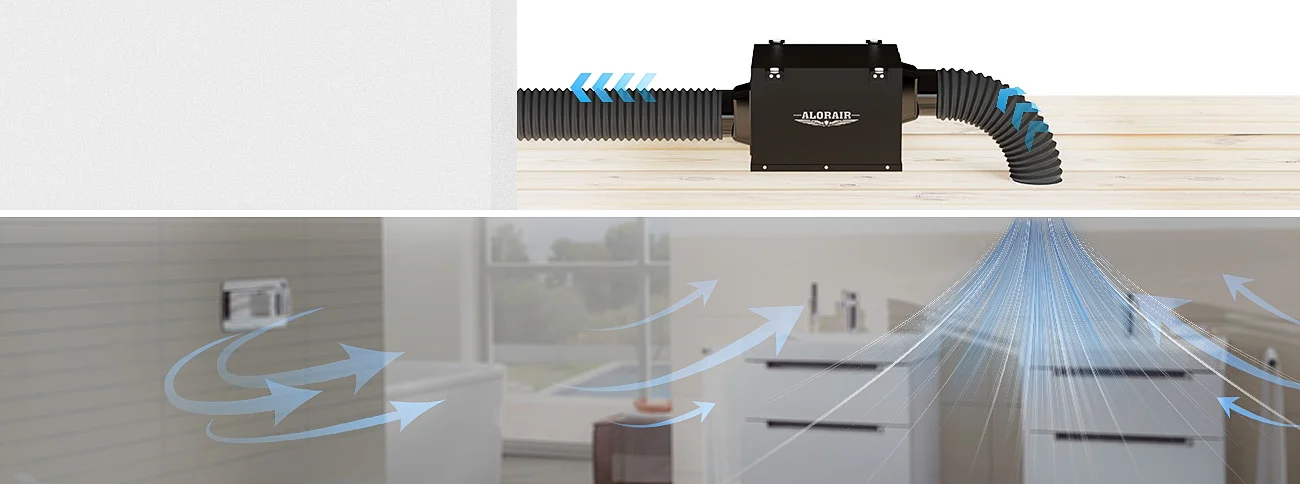What is an In-Line Fan?
An in-line fan is a mechanical ventilation device that enhances airflow by moving air through a duct system. Unlike standard exhaust fans, in-line fans are installed within the ductwork, allowing them to efficiently transport air over longer distances.
What Does an In-line Fan Do?
These fans improve air movement within enclosed spaces, ensuring better ventilation and circulation for a more balanced indoor environment. It helps regulate humidity levels, preventing excess moisture buildup and reducing the risk of mold growth. By actively removing stale or polluted air, in-line fans ensure a continuous flow of fresh air. Additionally, they support HVAC systems by distributing air more evenly, making temperature control more effective and improving overall indoor comfort.
Best Uses for In-Line Fans
These fans are particularly beneficial in areas that require enhanced airflow.
In bathrooms and kitchens, they help eliminate excess humidity and lingering odors. Basements and crawl spaces benefit from in-line fans as they prevent damp conditions that can lead to mold growth. In grow rooms and greenhouses, in-line fans regulate temperature and humidity, creating a healthier environment for plants. They are also widely used in HVAC systems to optimize air distribution across different rooms.
What is an Air Purifier?
An air purifier is a device designed to remove airborne contaminants such as dust, pollen, smoke, pet dander, and bacteria. It typically uses HEPA filters, activated carbon, or UV light to capture and neutralize pollutants.
What Does an Air Purifier Do?
Air purifiers are designed to filter out airborne contaminants, improving indoor air quality by removing allergens, dust, pollen, and other particles. They help reduce odors from common household sources such as pets, cooking, and smoke. Additionally, advanced models can eliminate bacteria, viruses, and mold spores, making the air healthier to breathe. These benefits make air purifiers particularly useful for individuals with allergies or respiratory conditions, as they provide cleaner air and minimize exposure to irritants.
Best Uses for Air Purifiers
Air purifiers are ideal for spaces where maintaining clean air is essential. They are commonly used in bedrooms and living rooms to reduce allergens and dust accumulation. In offices and workplaces, they enhance air cleanliness, creating a healthier environment for employees.
Homes with pets benefit from air purifiers as they help minimize dander and odors. Additionally, in areas affected by wildfire smoke or industrial pollution, air purifiers play a critical role in reducing harmful airborne particles, ensuring safer indoor air quality.
Key Differences Between In-Line Fans and Air Purifiers
| Feature |
In-Line Fan |
Air Purifier |
| Primary Function |
Enhances airflow and ventilation |
Removes airborne pollutants |
| Removes Humidity? |
Yes |
No |
| Filters Airborne Particles? |
No |
Yes |
| Reduces Odors? |
Partially (by exhausting air) |
Yes |
| Best For |
Improving ventilation and air circulation |
Eliminating allergens and pollutants |
Which One Do You Need?
Choosing between an in-line fan and an air purifier depends on your specific indoor air concerns.
- If you need to improve airflow and prevent humidity buildup, an in-line fan is the right choice. It is especially useful for moisture-prone areas like bathrooms, kitchens, and crawl spaces.
- If you need to remove allergens, dust, and pollutants, an air purifier is the better option. It works best in bedrooms, offices, and areas where clean air is a priority.
- In some cases, both may be needed. For example, a damp basement might benefit from an in-line fan for ventilation and an air purifier to remove mold spores.




